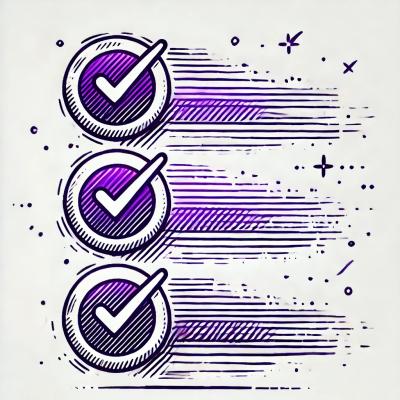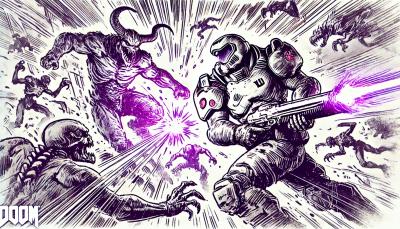Wingbot.ai - web chat component
Frontend React web chat component is supposed to be used within the wingbot.ai infrastructure.
Architecture overview
|‾‾‾‾‾‾‾‾‾‾‾‾‾‾‾‾‾‾‾‾‾‾‾‾‾‾‾‾‾‾‾‾‾‾‾‾‾‾‾‾‾‾|
|‾‾‾‾‾‾‾‾‾‾‾‾| | chatbot infrastructure |
| host page | | (AWS/Azure/Docker) |
| | | |
| |‾‾‾‾‾‾‾‾| | | |‾‾‾‾‾‾‾‾‾‾‾‾‾‾| |‾‾‾‾‾‾‾‾‾‾‾‾‾| |
| | chat |-|- https -|-| wingbot.ai | | chatbot app | |
| | widget |-|-- wss --|-| Messaging |- https -| with | |
| |________| | | | Orchestrator | | wingbot lib | |
|____________| | |______________| |_____________| |
users web | | | |
browser | |‾‾‾‾‾‾‾‾‾‾‾‾‾‾‾‾‾‾‾‾‾‾‾‾‾‾‾‾‾‾‾‾‾‾‾‾‾‾| |
| | MongoDB database | |
| |______________________________________| |
|__________________________________________|
Chat/Orchestrator security options
Above the all low-level security options like firewalls, WAFs and on,
the chat itself provides additional security features
- web page whitelisting (XHR Referrer)
- IP whitelisting
- Session bound conversation (when user signs-out, the conversation is removed)
- OAuth/OpenID/SAML authentication (XHR, background i-frame, redirect)
How to connect Wingbot Webchat to any website
The chat widget can be deployed by following methods:
- React component
- Append to HTML element
- CDN Hosted - HTML snippet method
React component
UI component within a JSX component
import { WingbotChat } from 'wingbot-chat-ui';
export default function MyChatComponent (props) {
return (
<WingbotChat
pageId="<put your page-id here>"
contextUserAgentProp="ua"
contextScreenResolutionProp="sr"
/>
);
}
SCSS style
Include following CSS style for deploying a default chat style
$ff: BlinkMacSystemFont, -apple-system, "Segoe UI", Rubik, Helvetica, Arial, sans-serif;
@use '~wingbot-chat-ui/scss/fontRubik' with (
$wb-font-path: '~wingbot-chat-ui/scss/fonts'
);
@use '~wingbot-chat-ui/scss/general' with (
$chat-font-family: $ff,
$chat-square-btn: true
);
Append to HTML element
Just in case if your project is not built on React
import 'regenerator-runtime/runtime';
import { createWingbotChat } from 'wingbot-chat-ui';
const wingbotChat = createWingbotChat();
const element = document.getElementById('chat');
wingbotChat('init', {
pageId: '<put your page-id here>',
contextUserAgentProp: 'ua',
contextScreenResolutionProp: 'sr'
}, element);
CDN Hosted - HTML snippet method
On the example below you can see the minimal setup for connecting the Wingbot webchat to a website.
<link href="https://orchestrator.wingbot.ai/styles/wingbotChat.css" rel='stylesheet' type='text/css'>
<div id="chat"></div>
<script>
window.wingbotChatCmds=window.wingbotChatCmds||[];
window.wingbotChat=window.wingbotChat||function(){wingbotChatCmds.push(arguments)}
wingbotChat('init', {
pageId: '<put your page-id here>',
contextUserAgentProp: 'ua',
contextScreenResolutionProp: 'sr'
}, document.getElementById('chat'));
</script>
<script async src="https://orchestrator.wingbot.ai/wingbotChat.js"></script>
We can split this example code to the 4 main parts:
- CSS styles
- link with the basic webchat theme, working out of the box
- feel free to create your own and replace it
- Physical representation
<div id="chat"></div> is physical representation of the webchat- it can be placed anywhere in your website
- Webchat configuration
- this part is mostly for configuration the webchat configuration
pageId is mandatory and unique, if you don't know your pageId feel free to contact Wingbot supportdocument.getElementById can be set to any existing element in the website
- Source to the webchat code
- the last line of the example is link to the actual webchat app
- please do not download it and/or cache it somewhere in your infrastructure if you want to have the latest and the most secure version of Wingbot webchat
Dig more deeply into the configuration
As we saw in the example above, webchat is configurable with 3 parameters.
Lets have a look little bit deeply about the configuration right now:
Webchat commands and parameters:
webchat (
'init',
element,
config
);
There are supported parameters for the config object:
| Parameter | Default value | Description | Example |
|---|
disableComposer | false | Disables user input - makes chat read only | |
resetOnClose | false | Starts a new conversation when reopening chat after it's close | |
pageId | required | Identifier of page | '134271f0-1d1c-42a3-9191-6288fd1a263b' |
api | null | Override an API URL of orchestrator (on-premise solutions only) | |
websocket | null | Override an websocket URL of the widget (on-premise solutions only) | |
token | null | Conversation token to continue in already existing conversation | |
refreshInterval | 15000 | Interval in miliseconds to refresh the credentials | |
startAction | start | Postback payload to send a non-visual chat event for start the conversation | |
lang | null | Force the widget to use specified language | |
fallbackLang | 'en' | Use this language if it cannot be detected automatically | |
reduxEnhancer | null | Redux plugin to be used within chat | |
onInit | () => {} | Will be called when chat has been successfuly initialized | |
headerText | null | Set a static text to be used as a header | |
context | {} | Thread context variables - will be pushed to the bot | |
uploadEnabled | false | On/off for a file upload (boolean) | |
uploadSizeLimit | 1048576 * 6 | Hard limit for the file upload, bigger file cannot be uploaded | |
uploadSoftLimitForResize | 1048576 * 2.5 | Soft limit for the file upload, bigger file will be shrunk, 0 means no shrinking | |
contextUserAgentProp | null | Context prop to store user agent | 'ua' |
contextScreenResolutionProp | null | Context prop to store screen resolution | 'sr' |
contextLangProp | null | Context prop to store chat language | 'lang' |
contextPathProp | null | Context prop to store window path | 'path' |
oauthMode | 'iframe' | Method for OAUTH authentication | `'xhr' |
homeAction | undefined | If homeAction is true or string home button will be enabled in the chat header. If homeAction is string home button sends a postback to homeAction. If homeAction is true home button sends a postback to startAction | true |
langFromUrl | undefined | If langFromUrl is true language will be set based on url query parameter lang. If langFromUrl is string language will be set to langFromUrl | true |
startAnimationSequence | 💬😉 | Default animation sequence of the button | |
hoverAnimationSequence | 👋😊 | Hover animation sequence of the button | |
loadingAnimationSequence | 😴🍳🤗💅👔 | Hover animation sequence of the button | |
onlineAnimationSequence | <svg> | Hover animation sequence of the button | |
offlineAnimationSequence | <svg> | Hover animation sequence of the button | |
persistentMenu | null | Menu of the chat widget provided as a structure below | |
Animation sequence
list of animation frames with transitions
{i: string|ReactElement,animate?:string,timeout?:number}[]
i - string (emoji) or react elementanimate - name of transition effect from (animate.style)[https://animate.style]timeout - time in ms (default: 2000)
onlineAnimationSequence: [
{
i: (
<svg width="23" height="23" viewBox="0 0 23 23" fill="none" xmlns="http://www.w3.org/2000/svg">
<path d="M0 11.5C0 5.14873 5.14873 0 11.5 0V0C17.8513 0 23 5.14873 23 11.5V23H11.5C5.14873 23 0 17.8513 0 11.5V11.5Z" fill="#1FFFB4" />
</svg>
)
}
]
Persistent menu
persistentMenu: [
{
locale: 'default',
call_to_actions: [
{
type: 'postback',
title: 'Button Title',
payload: 'address'
}
]
}
]
Development
Because the frontend is in a separate repository, you must first link the frontend to the backend during development, and then run auto build.
Linking can be done via the utility link: https://docs.npmjs.com/cli/link, like this:
cd ~/<local_repo_path>/wingbot-chat-ui
npm link
cd ~/<local_repo_path>/wingbot-ai-orchestrator
npm link wingbot-chat-ui
Also, to have working React hooks, you need to link React library from chat to orchestrator
cd ~/<local_repo_path>/wingbot-chat-ui
npm link <orchestrator_path>/node_modules/react
Next, you need to run the command in the root of the wingbot-chat-ui project:
npm run develop
Furthermore, it is normally possible to continue the webchat project with the command:
npm run start



